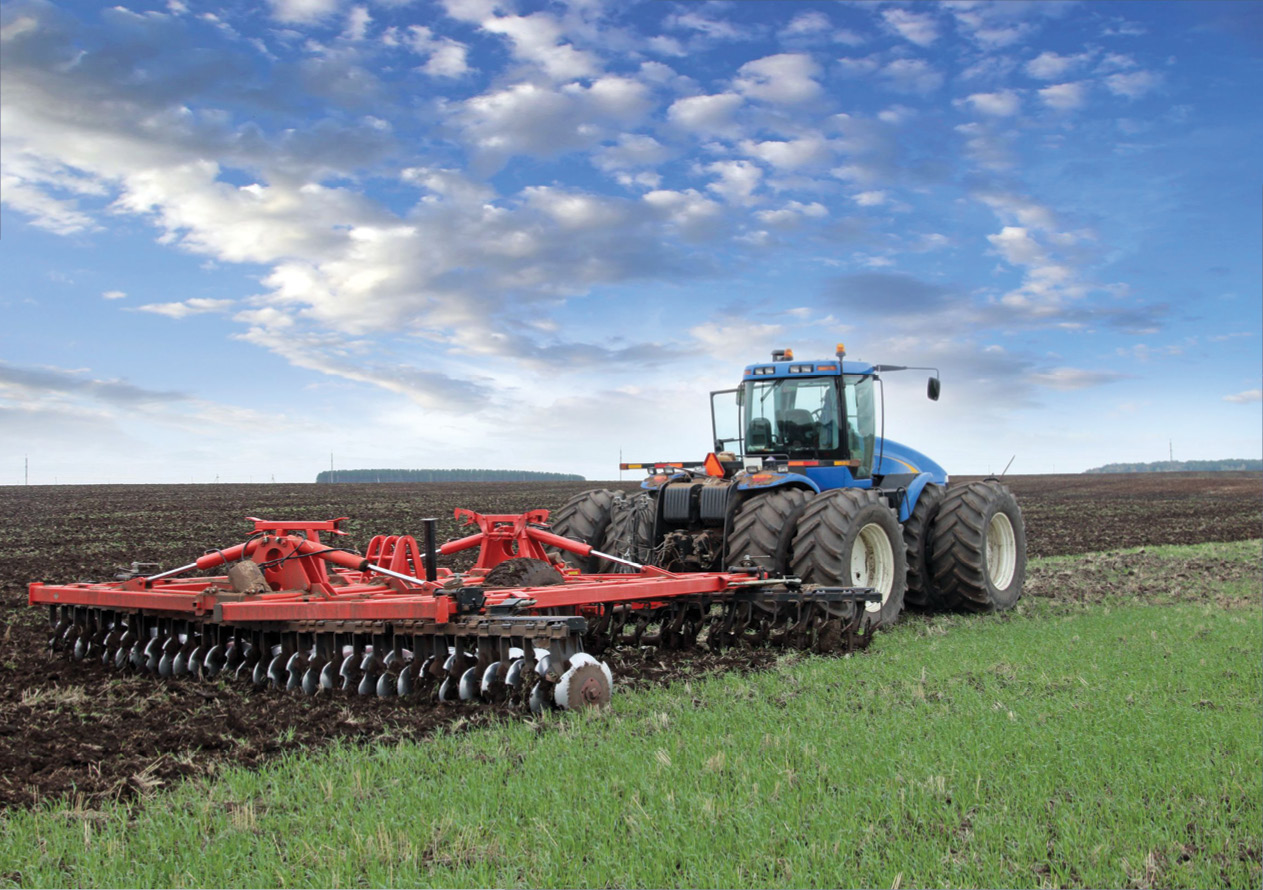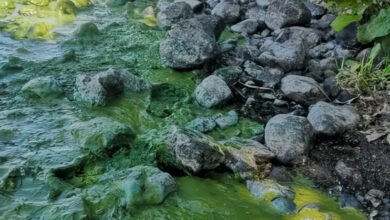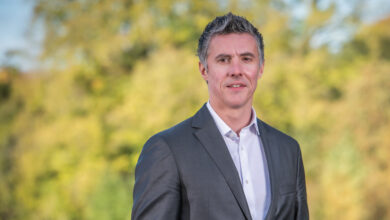Can agriculture and the environment flourish in tandem?


The COP 21 agreement reached in Paris a year ago will have major implications for agriculture in Northern Ireland, writes Richard Halleron.
 Farming is a major source of greenhouse gases. For example, cattle and sheep, produce large quantities of methane, which has been shown to have a more than 25 times’ greater impact on global warming than carbon dioxide. In addition, nitrous oxide, produced as a result of spreading nitrogen fertiliser on land, is 100 times more potent than carbon dioxide, where global warming is concerned. According to Green House Gases (GHG) inventories of the EU-28 Member States, GHG emission in the source category agriculture accounted for a total 471 million tons of CO2 equivalents in 2012. This represented 10.3 per cent of total EU-28 GHG emissions during the year in question.
Farming is a major source of greenhouse gases. For example, cattle and sheep, produce large quantities of methane, which has been shown to have a more than 25 times’ greater impact on global warming than carbon dioxide. In addition, nitrous oxide, produced as a result of spreading nitrogen fertiliser on land, is 100 times more potent than carbon dioxide, where global warming is concerned. According to Green House Gases (GHG) inventories of the EU-28 Member States, GHG emission in the source category agriculture accounted for a total 471 million tons of CO2 equivalents in 2012. This represented 10.3 per cent of total EU-28 GHG emissions during the year in question.
But agriculture is also directly affected by the impact of global warming and climate change. More extreme weather events will lead to increasing droughts and floods in many parts of the world. In turn this will impact on crop yields and enhanced soil erosion levels. This is already happening. However, there is also strong evidence to show that agriculture can also help to provide solutions to the overall climate change problem by reducing emissions and by sequestering carbon while not threatening viable food production.
Until Brexit becomes reality, Northern Ireland’s response to the challenge of global warming will be driven by Brussels. To date, Europe’s core response to the challenge of global warming across the farming sectors has been to introduce a ‘green payment’ within the framework of the Common Agricultural Policy (CAP). This is made available to incentivise the implementation of three compulsory practices: namely crop diversification plus the creation of ecological focus areas and permanent grassland, whose environmental benefits on biodiversity, water and soil quality, carbon sequestration and landscapes have been proven.
Greening represents 30 per cent of the direct payment budget. Given that greening is compulsory, the associated payments have the advantage of introducing practices that are beneficial for the environment and climate change on large part of the utilised agricultural area across Europe.
EU farm commissioner Phil Hogan believes that the development of a sustainable farming sector will be a cornerstone of Europe’s response to global warming. Speaking at a recent conference in Brussels, he said that the CAP has been reoriented to improve the environmental performance of EU agriculture and to contribute to the provision of public goods not remunerated by the markets.
The commissioner added: “In the 2014-2020 period, 30 per cent of CAP funding supporting farmers’ incomes will be spent on environmental and resource friendly production methods and nearly half of the EU-budget for rural development programmes will be spent on a series of measures benefitting the environment or the fight against climate change. In addition, the European Union is a committed leader in the area of climate action.”
Here in Northern Ireland a co-ordinated and joined up strategy on land management should help to ensure that agriculture and the environment can flourish in tandem. That was the key message from Agriculture and Environment Minister Michelle McIlveen as she received the recently completed report on a proposed ‘Sustainable Agricultural Land Management Strategy’. The work was undertaken by an expert working group, consisting of farmers, environmentalists, officials and food processors. It was chaired by former Ulster Farmers’ Union president John Gilliland. This is the first report of its kind for Northern Ireland and provides a number of recommendations on how best to support productive agriculture, whilst improving environmental performance.
In order to achieve sustainable land management in Northern Ireland, the proposed strategy calls for a culture of behavioural change created by the provision of personalised information to empower farmers through measuring and managing the performance of their land.
“We want to see changes in how government regulates and advises farmers on the environment,” says Gilliland.
“Too many farmers associate the environment with regulation and penalties leading to a culture of fear. We want farmers to recognise that so much of what is good for the environment is also good for farm businesses and that the environment can be a profit centre and not just a cost centre.
“We strongly believe that government should take an advocacy first approach to improving environmental management on farms. Providing advice and guidance to farmers on how to correct environmental issues should be the initial priority with regulation and enforcement undertaken only where they are needed.” Improving the health of Northern Ireland’s agricultural soils is the central focus of this strategy.
According to Gilliland, healthier soils will deliver better yields of crops and grass which are higher in quality.
“This will provide the raw material necessary for the increased productivity and profitability envisaged by Northern Ireland’s Going for Growth, where farming and food are concerned, while also delivering environmental improvement,” he explains.
McIlveen says that the report is an excellent example of how a genuine partnership between government, the food chain and the farming and environmental sectors can work together for the common good, adding: “As Minister for both agriculture and the environment, building such vibrant partnerships is an important priority for me. I believe that a coordinated and joined-up strategy will help to ensure that agriculture and the environment, can flourish in tandem.”
There is little doubt that the long term implications for local agriculture arising from the Paris climate change summit will be significant. While highlighted as a potential strength by the Gilliland team, paradoxically, the great weakness in the Irish case, as seen by many environmentalistsis the fact that so much of our beef, milk and lamb are produced from grazed grass. This is seen as a fundamentally inefficient way to produce these foods: hence the tendency of some scientists to question the long term sustainability of grass-based production systems.
“Until Brexit becomes reality, Northern Ireland’s response to the challenge of global warming will be driven by Brussels.”
A case in point was the 2014 report produced by the left wing think tank Chatham House. In fact, this went one step further by questioning the future sustainability of livestock production across the board. The authors of the piece also made the assertion that the general public had been kept in the dark regarding the very negative impact of livestock production systems, from a global warming point of view.
In contrast, local farmers and the food industry as a whole know that including high levels of grazed grass in ruminant diets is the most natural way of producing beef, lamb and milk and this is where the battle lines for the future will be drawn.
It will be up to the agri-food industry, backed up with all the research results available, to defend the bona fides of the farming practises that have been carried out in this country for generations. The stakes involved are extremely high: failure on the part of our farming and food industries to win the ‘ruminant’ debate, could sound the death knell for agriculture as we know it.
Yes, John Gilliland’s team have identified the key areas that must be addressed, when it comes to making grassland production practises more efficient here in Northern Ireland but their report was commissioned at a time when the EU was at the helm of agricultural policy. The Brexit vote means that Whitehall will have the final say when it comes to the implementation of the Gilliland proposals. All bets are off, at least for the moment, when it comes to predicting how London will respond to the real needs of farming in Northern Ireland over the coming years.





